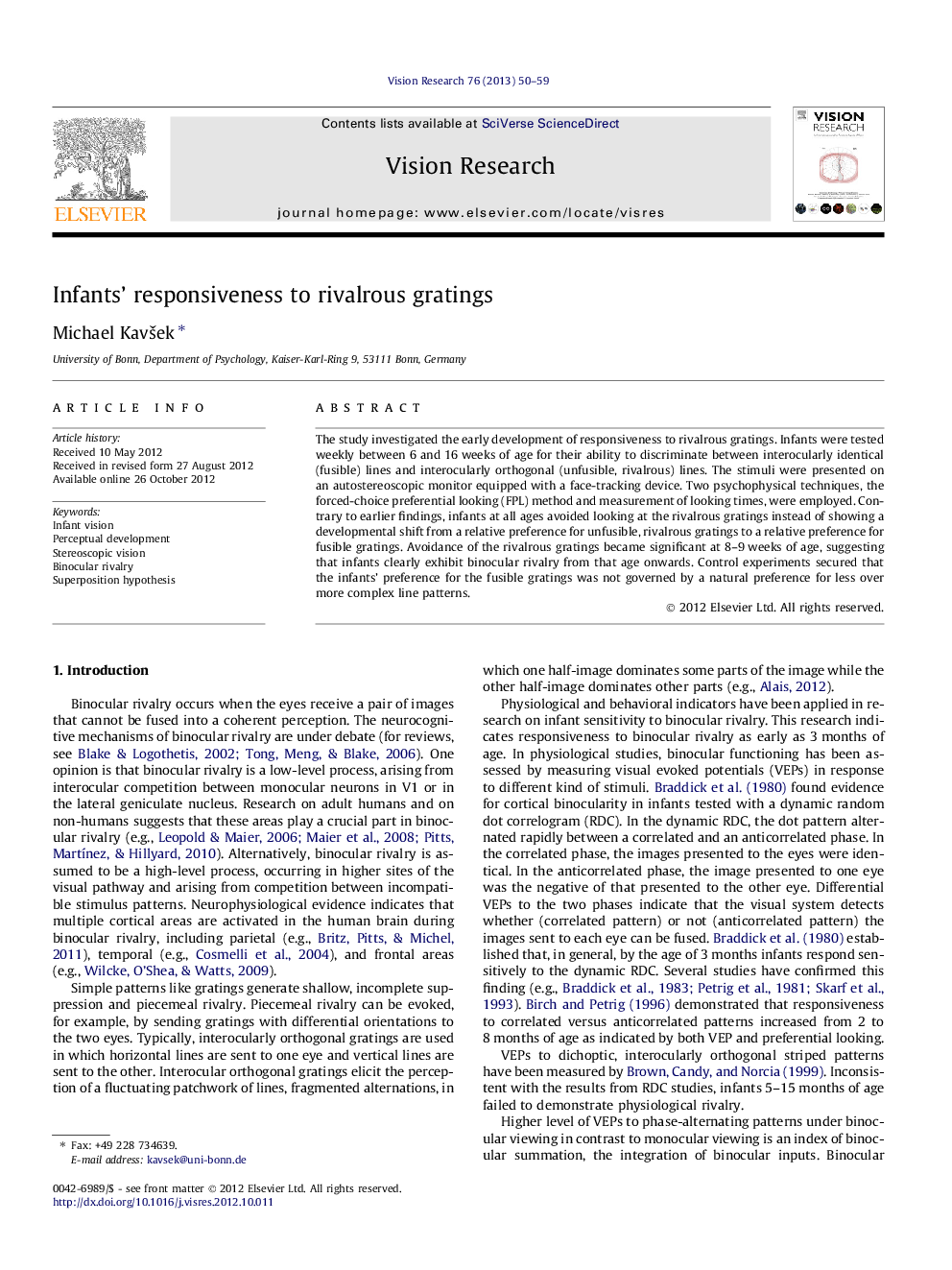| Article ID | Journal | Published Year | Pages | File Type |
|---|---|---|---|---|
| 6203630 | Vision Research | 2013 | 10 Pages |
The study investigated the early development of responsiveness to rivalrous gratings. Infants were tested weekly between 6 and 16Â weeks of age for their ability to discriminate between interocularly identical (fusible) lines and interocularly orthogonal (unfusible, rivalrous) lines. The stimuli were presented on an autostereoscopic monitor equipped with a face-tracking device. Two psychophysical techniques, the forced-choice preferential looking (FPL) method and measurement of looking times, were employed. Contrary to earlier findings, infants at all ages avoided looking at the rivalrous gratings instead of showing a developmental shift from a relative preference for unfusible, rivalrous gratings to a relative preference for fusible gratings. Avoidance of the rivalrous gratings became significant at 8-9Â weeks of age, suggesting that infants clearly exhibit binocular rivalry from that age onwards. Control experiments secured that the infants' preference for the fusible gratings was not governed by a natural preference for less over more complex line patterns.
⢠Infants 6-16 weeks were tested longitudinally for their responsiveness to rivalry. ⢠The stimuli were fusible versus unfusible striped patterns. ⢠Looking times and forced-choice preferential looking (FPL) were observed. ⢠Infants at all ages avoided looking at the rivalrous pattern. ⢠Additional experiments controlled the impact of stimulus complexity.
